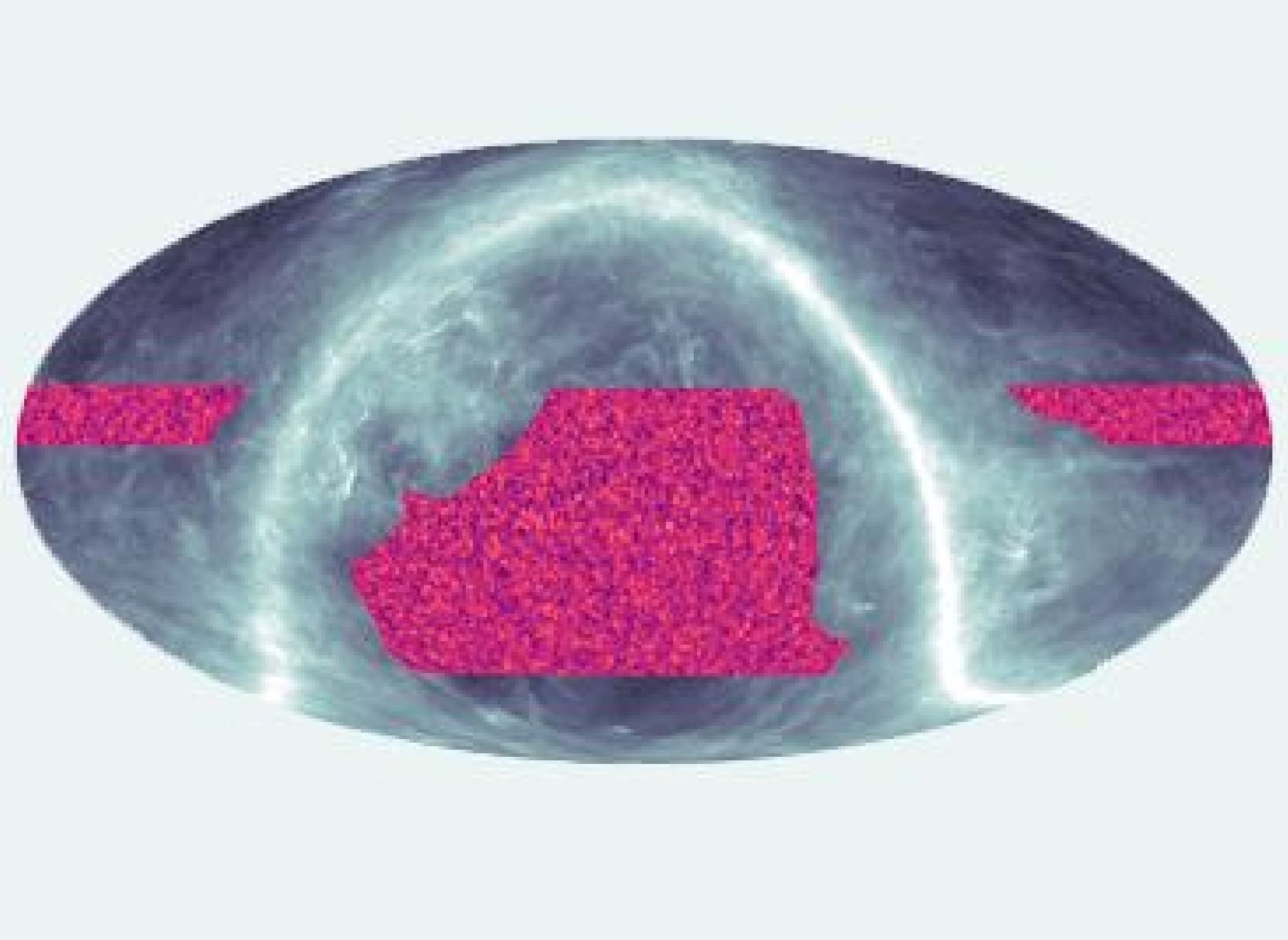
A new map of the cosmos shows the distribution of mysterious dark matter in sharp detail.
The map, which covers a quarter of the sky over Earth and extends deep into the cosmos, was created using a "cosmic fossil" known as the cosmic microwave background (CMB), radiation left over from just after the Big Bang.
The new map, created by the Atacama Cosmology Telescope (ACT) collaboration, has helped confirm a theory of gravity pioneered by Albert Einstein over a century ago.
Related: No, the Big Bang theory is not 'broken.' Here's how we know.
Einstein's 1915 theory of general relativity posits that objects with mass "warp" the fabric of space-time, giving rise to gravity and leading to specific predictions about how the large-scale structure of the universe formed and evolved to the state we observe today, 13.8 billion years after the Big Bang. These predictions comprise what is known as the "standard model of cosmology."
"We have used the CMB, the oldest light in the universe, emitted soon after the Big Bang, to measure how dark matter — the invisible stuff that makes up the majority of the matter in the universe — is distributed on large scales," ACT team member Adam Hincks, an astrophysicist at the University of Toronto, said in a statement.
"The distribution agrees very well with theoretical predictions," Hincks said. "It's a really satisfying result scientifically because it shows we have a robust understanding of how our universe grows and evolves."
Using the effects of gravity to 'see' the invisible
To create the map, the scientists used data collected by the ACT, which viewed the heavens from Cerro Toco in the Chilean Atacama Desert for 15 years before it was decommissioned in 2022. The ACT observations allowed the team to study the effect that gravitational lensing, also predicted by general relativity, has on the CMB.
Gravitational lensing arises from the fact that, when gravity warps space-time, it distorts the path of light traveling toward us. The nature of this warping can tell astronomers a lot about the distribution of the mass causing the spatial distortion.
The CMB is effectively the "first light" in the universe, as it comes from an era called the epoch of recombination and an event called "the last scattering." When the universe was an infant, it was filled with a sea of electrons, gluons and quarks. Electrons endlessly scattered photons, particles of light, which meant that light couldn't travel through the cosmos. As a result, the universe was opaque, like a brick.
As the universe cooled, particles could start to stick together. Quarks and gluons formed protons and neutrons, and these bonded with electrons to create the first atoms, around 380,000 years after the Big Bang. With fewer free electrons around, photons could travel unimpeded, and the universe became transparent, like a window.
The CMB is this first freely traveling light. Thanks to the continuing expansion of the universe, this ancient radiation fills the cosmos almost uniformly, with the occasional tiny variation.
The ACT scientists looked at the effect the gravity of the large structure of the universe has on the CMB as the result of gravitational lensing, providing them with a great way of mapping ordinary matter and, especially, dark matter, which makes up about 85% of the material universe but remains mysterious.
Dark matter doesn't interact with light like the "normal" stuff that comprises stars, planets and us, meaning that astronomers can't see it in any wavelength of electromagnetic radiation. But dark matter does have mass and thus it does interact gravitationally. That means that its presence can be inferred as a result of its gravitational interactions with matter and radiation.
Crucially, it also means that dark matter has a gravitational lensing effect, especially when it is in large concentrations like the halos that are theorized to surround most, if not all, galaxies. This lensing effect can be seen in the distortion of the CMB.
This distortion allowed the team to create a highly detailed cosmic map of the distribution of both ordinary matter and dark matter, revealing that the stuff takes the shape predicted by general relativity and the standard model of cosmology that emerged from it.
Related: What is dark matter?
Dark matter is just lumpy enough
The matter distribution map could also help settle a problem in cosmology that emerges from measurements of light from distant stars, which suggest that dark matter isn't as "lumpy" as it should be, according to the standard model of cosmology.
The ACT map suggests that the vast clumps of dark matter observed are just the right size to fit in with the standard model of cosmology. The ACT team said that means that the new findings fit the overall picture scientists have about the evolution of the cosmos.
At the same time, the more accurate measurements that comprise the ACT map should allow researchers to scrutinize that picture on an entirely new and deeper level. This could help finally nail down where discrepancies in different dark matter mapping techniques are coming from, team members said.
"In cosmology, as in all of science, having independent measurements that test the same theoretical model is really important," Hincks said. "The fact that we can successfully explain how our cosmos works with this level of precision is amazing."
The collaboration's research is discussed in three papers soon to be published in the Astrophysical Journal, which are currently available on the Atacama Cosmology Telescope website.
Follow us @Spacedotcom, or on Facebook and Instagram.







